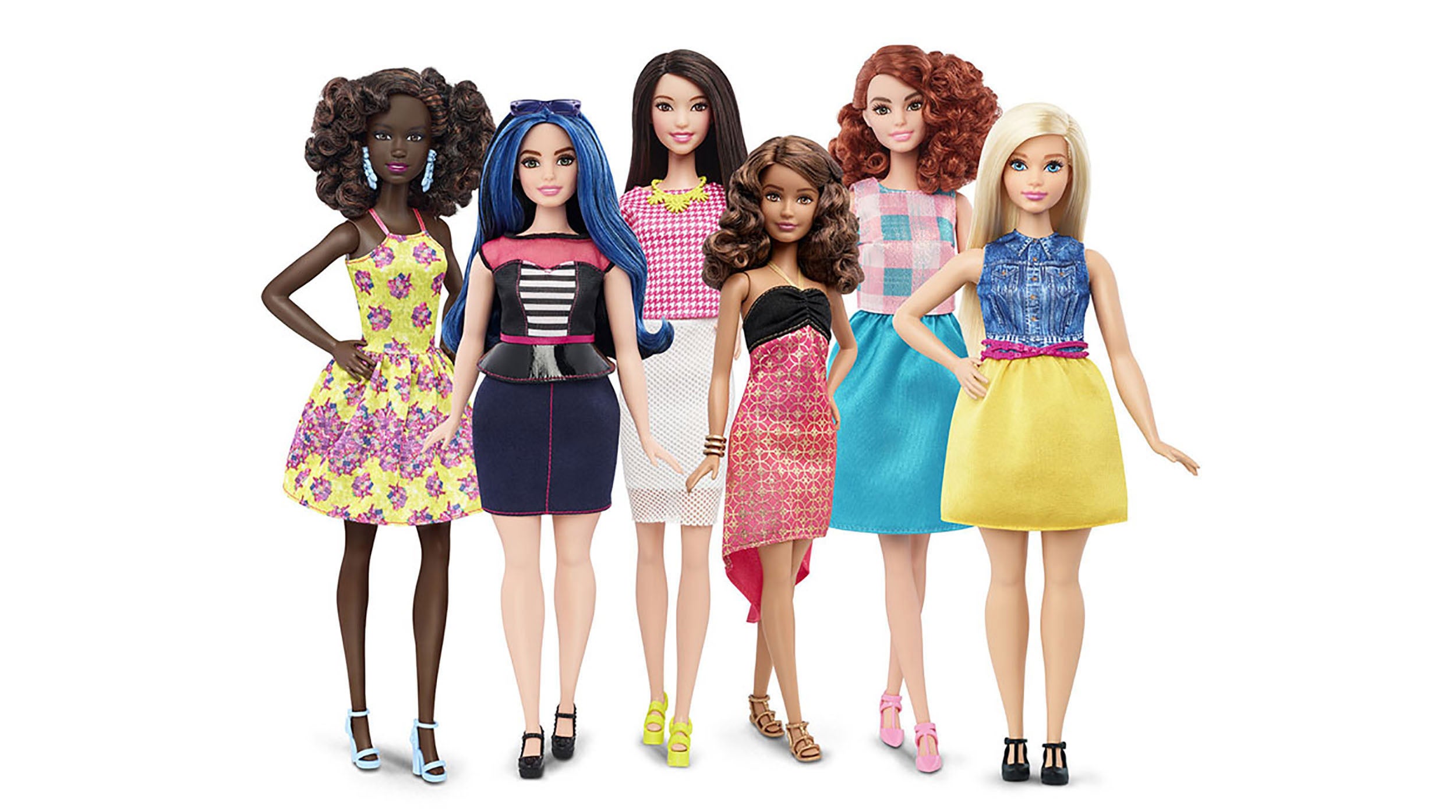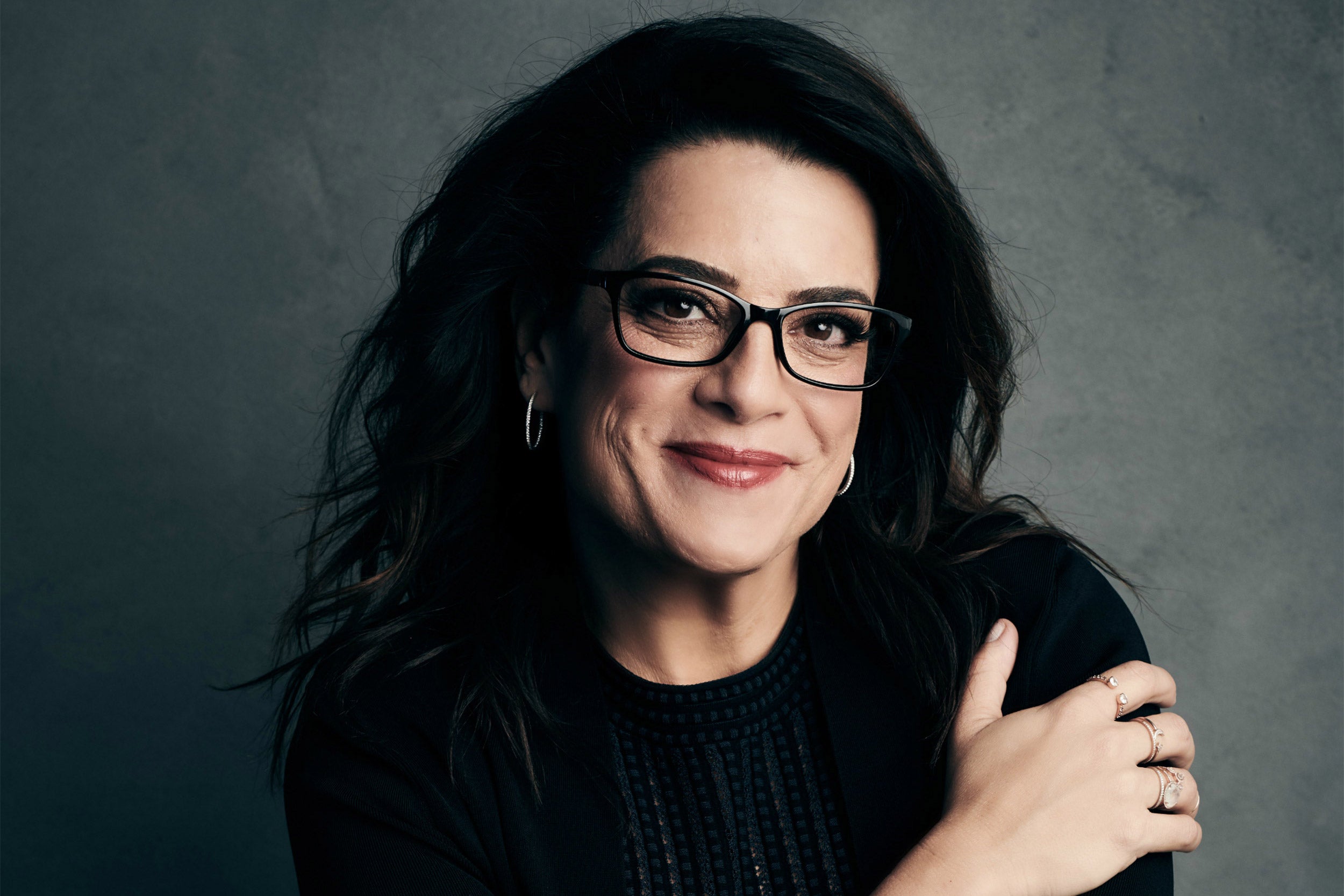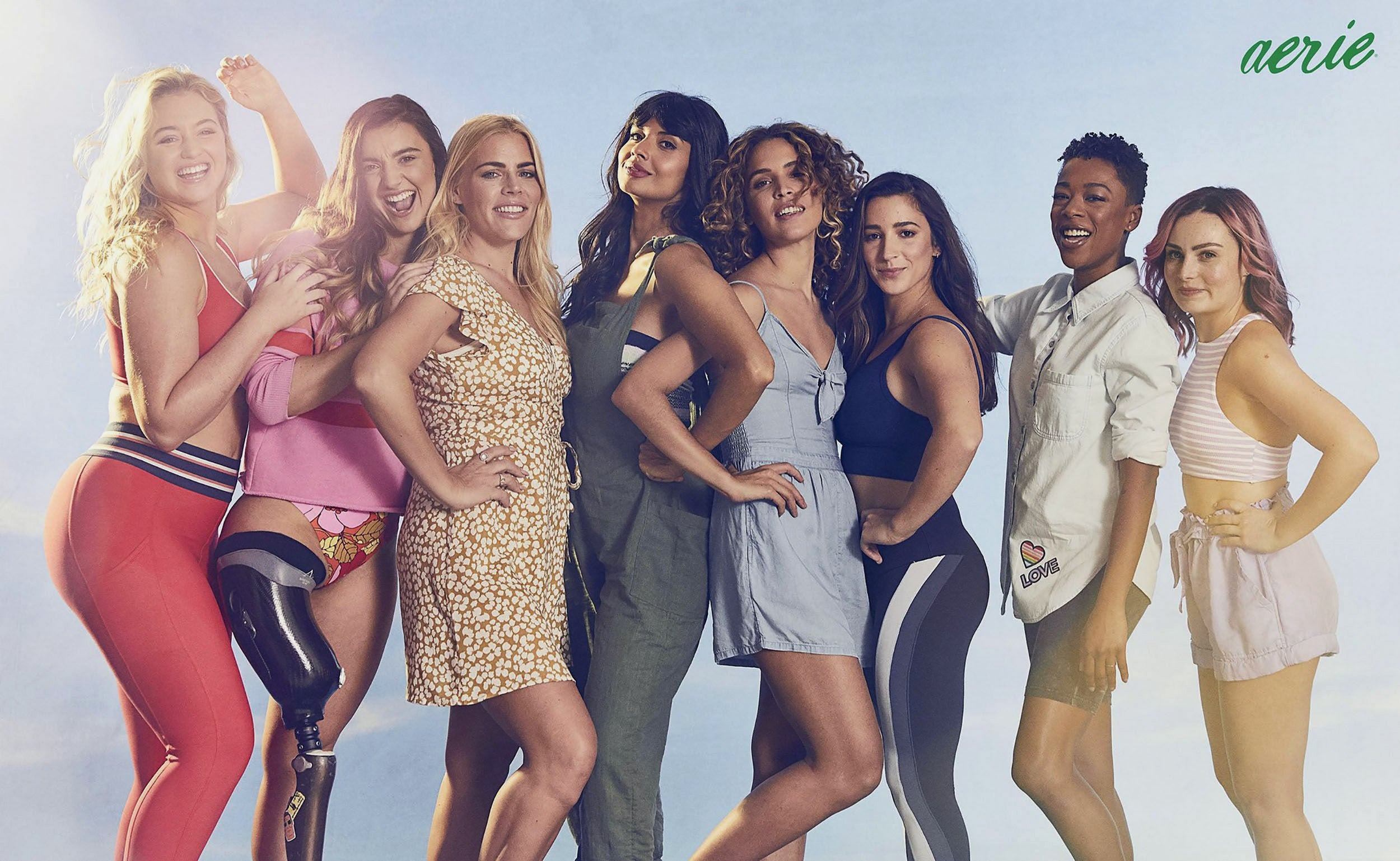
Barbie was rebranded in 2016. The woman behind that project, Jess Weiner, will be a keynote speaker at “Harvard Hears You: The 2019 Summit for Gender Equity” on April 2.
Listen up
Jess Weiner on upcoming gender equity summit, body diversity, Laverne Cox, and Barbie
On April 2, Harvard will host “Harvard Hears You: The 2019 Summit for Gender Equity,” a daylong event sponsored by the Title IX Office and the Weatherhead Center for International Affairs. Over the course of the daytime portion of the summit, which will take place at the Smith Campus Center, high-profile guests, faculty, staff, and students will present in a variety of formats, including TED-style talks, on-stage interviews, and panel presentations.
The program will culminate with an evening panel at Memorial Church during which actress Laverne Cox, fashion designer Christian Siriano, blogger Nicolette Mason, and cultural expert Jess Weiner will discuss gender equity in the realms of pop culture, advertising, and consumerism.
“Harvard Hears You” also marks the opening of the 2019 Harvard Student Survey on Sexual Assault & Misconduct, a critical tool the University will use to help guide policies to encourage a healthy, safe, and nondiscriminatory environment on campus. The survey will be open for all degree-seeking students until April 30.
The Gazette sat down with Weiner, who will also provide the morning keynote address, to discuss her hopes for the day’s events, her work as a cultural change-maker uniquely attuned to the issue of gender equity, and how the summit and survey present real opportunities for progress within the Harvard community.
Q&A
Jess Weiner
GAZETTE: You’re playing an important role in the University’s inaugural “Harvard Hears You” summit, both as the keynote speaker and in guiding the evening panel, which features some of society’s most visible champions of gender equity. Give us a sense of what it means to you to play this role, and what your hopes are for the event overall.
WEINER: I’ve been a social entrepreneur for 25 years, focused primarily on how to better represent people in media, marketing, and advertising. My work goes beyond merely the image of an individual being portrayed, or even the campaigns designed to represent them; it also focuses on the people who, day in and day out, work to create the messages and the stories that drive these representations, both in the corporate world and in higher education. The “Harvard Hears You” program in some ways represents the perfect confluence of my own work, as it will feature participants across a variety of fields and encourages the kind of diverse individual voices that are truly necessary to make change happen. This has been a unifying factor in all of my work.
I’m especially lucky that my role is a bookend to the event. From the beginning, I plan to share my own circuitous journey working toward a career that puts gender equity at the forefront, and then I want to help to create a space for the student population at Harvard to better understand where they reside on the issue of gender equity. I also hope to encourage them to listen to others’ experiences throughout the day, to really open their minds, and to challenge their own senses of privilege and unconscious bias.
In the evening, I’m thrilled to convene a panel with three cultural trailblazers who are really disrupting their own fields and the notion of gender equity and equality. Nicolette Mason and her partner Gabi Gregg have launched this innovative, direct-to-consumer, plus-size fashion brand that was born from a passionate stance whereby they didn’t see offerings for them in that space.
If you can’t find clothing that fits your body, that has a lot to do with equity, and they have been tireless in their pursuit to change this.


Jess Weiner, who is known as a cultural changemaker, is currently working with the retail brand Aerie.
By being true to himself and his own vision, Christian Siriano has disrupted the fashion industry, choosing to dress “bodies” who may not always be considered mainstream in fashion nor show up in the binary definition of gender in our culture. The most iconic image we have in our mind right now is what Billy Porter looked like at the Oscars this year, with his tuxedo gown. For me, Christian is emblematic in where we’re heading with genderless expression in fashion.
And Laverne Cox has been an advocate for the trans community and has broken new ground in Hollywood with her role in “Orange Is the New Black.” How she shows up in her life has opened up the conversation around transgender rights and opportunity, not just in Hollywood but beyond. She’s a role model for so many people.
For me, this summit offers a great setting to talk big-picture about why gender equity is so important, but also on a granular level since this summit is also about promoting a climate survey, it offers participants the chance to reflect upon their own personal accountability and why and how we can be better leaders individually regardless of our status or stature in our own professional or student life. I look forward to exploring the idea that we all have a role to play in the conversation and work around gender equity.
GAZETTE: You mentioned the climate survey, which all degree-seeking members of Harvard’s community will have the opportunity to complete during the month of April. Harvard conducted a similar survey in 2015, which led to a significant increase in Title IX-related offerings and resources on campus, and the Title IX Office has communicated that it considers the 2019 survey as equally critical to better serving its community moving forward. Often, people wonder what a survey can truly do. What are your thoughts about this?
WEINER: I look at participating in a survey like this in the same way I look at my civic duty of voting. If I’m a part of a community that I care about, and I want to see change in it, and someone asks me my opinion, I have a responsibility to share it.
A survey like this can be so valuable. Since the last survey in 2015, the cultural conversations around sexual and gender-based harassment have changed dramatically. And I know, speaking in my role as a researcher and cultural expert, when we’re looking to extrapolate a sentiment, a theme, or the various facets of an issue ahead of implementing a campaign or a message or an intervention of some kind, we need to be able to look at the data, and to do so in a number of different ways. As an organizer, as a programmer, you can’t keep moving forward without first having learned from a good test space of your constituents. This kind of large-scale survey, with an audience as big and diverse as Harvard’s, is important for establishing benchmarks for measuring success.
I will say, I understand the fatigue around surveys. People may be worried about how personal can surveys possibly be, how actionable? And this is where Harvard has a really wonderful opportunity — to enact its community’s sentiments into new programming and policies. In my mind, surveys are a great way to be a part of a process to help shape a community you care about. There’s wonderful opportunity here to lead on the ideas and perspectives that matter.
GAZETTE: You mentioned the opportunity to lead, and you have a unique way of understanding leadership, one that you’ve brought to your consultancy work and directly to your students as a professor at USC’s Annenberg School of Journalism. Tell us more about this.
WEINER: I’m going to talk about this on April 2, because it matters a lot to me personally, and I also see that it matters a lot to the undergraduate and graduate students I teach at USC. I ground my work in purposeful leadership with exploration of personal vision, values, and mission. This helps my students identify their own non-negotiable values and their big-picture vision of what gets them out of bed in the morning.
I teach future journalists, public relations professionals, folks with business and film degrees, grads and undergrads, and my course is designed around “the business of being you.” Who are they going to be as a personal brand out in the world? In 2019, we’re now the CEOs of our own media empires. We sit on platforms for discussion and activism and cultivation that we didn’t have before, and I believe that it doesn’t matter if you have two followers or 2 million followers, but you have a vehicle to connect to people, and so it’s important to think about how you align your vision, your values, and your mission, with how you show up on social, or how you show up in your workplace, or in class. I ask my students to reflect upon, how do I integrate this reality fully into my life so that my work doesn’t feel like something outside of myself, but instead, my work feels like an extension of myself?
In my own life, my work with gender equity is very much an extension of what I care about personally. When I was a college student, I helped to bust up a longstanding tradition of sexual harassment at my university. It was the early ’90s, not a time when this was in the public zeitgeist like it is right now, and this experience is really what started my combination of activism and business and storytelling.
GAZETTE: Based on your portfolio of work throughout your career, it’s obvious that promoting gender equity has been a major part of your purpose. Talk about how that has driven forward cultural change through projects you’ve worked on, such as the Dove Campaign for Real Beauty, and more recently, in the rebranding of Barbie in 2016.
WEINER: Twenty-five years ago, when I began this work, the words diversity and inclusion weren’t as prominent in our lexicon. I started my career as an activist, an educator, a playwright, and I used stories to bring about some of these difficult conversations around gender equity, homophobia, racism, sexism, and body image. People, especially young people, didn’t have as many opportunities to have public conversations around these topics.
But then as culture started to shift and brands and businesses started to realize that these were important topics to take on from a business lens, that they affect consumers and therefore their bottom lines, corporate America started to think more about diversity and inclusion, and about how they could represent diverse stories. And they, of course, lagged so far behind. That’s when I started working with large, Fortune 500 companies and brands, because I saw an opportunity to make a major impact through advertising and branding and I was intrigued with figuring out how to disrupt a 60-year-old company or a 100-year-old brand that has a lot of history and legacy and bring it toward accomplishing the larger mission of changing public discourse, broadly.
When we launched the Dove Campaign for Real Beauty in 2006, we were at a time in our culture when we were just beginning to start to talk openly about beauty stereotypes and the impact they had on how people saw women and how women saw themselves. What I loved about that conversation at the time was that it was so relevant because it was touching the third rail on Photoshopping and airbrushing and alteration and it was exposing the fact that a lot of what we expect and demand about women’s appearances are often highly fabricated and manipulated. And there existed a very myopic view of white beauty. Dove asked the question, how do we democratize and challenge all of that? It’s now 2019, 13 years later, and the conversation of course still continues worldwide.
When Barbie and I started working together in 2011, the brand was at a very interesting intersection where they were not as relevant for the growing millennial parenting audience as they had been for prior generations. Millennials were now having kids and they were brought up to challenge gender stereotypes. Barbie seemed to signify to them an outdated model of what it looked like to be a woman that they didn’t feel was aspirational for their daughters or matching their modern values. So we spent some time exploring how to better reflect the next generation of girls and who play with Barbie and specifically how could we become more inclusive. That took some time, but that resulted in the 2016 launch of four new body types and seven new skin colors and over 20 different hair textures and eye shapes, all developed to better signify our global marketplace.
I’m currently working with a retail brand called Aerie from American Eagle, which is challenging Victoria’s Secret in the lingerie and loungewear division because they’re featuring bodies that we don’t normally see. They’re featuring differently abled bodies, women who have had breast cancer, women with alopecia, vitiligo, and visible insulin ports. So much of the conversation around equity, certainly in my work, centers around visibility and representation of different bodies, because if we disappear people in our media marketing and advertising, we disappear their story and it’s much easier to marginalize and abuse a population of people when they’re not visible. Of course, the largest visual medium of communication remains advertising, and so I look at my work with brands as a conduit for public communication and activism and ultimately as a vehicle for change.
Today, many more storytellers than ever before have a platform, as well as an opportunity to be conscious of what each of us has to contribute to the world. I believe that whether we work in corporate America, higher education, or another sector altogether, a next generation of leaders can change our culture for the better by leading with mindfulness and intention.
This interview has been lightly edited for length and clarity.




